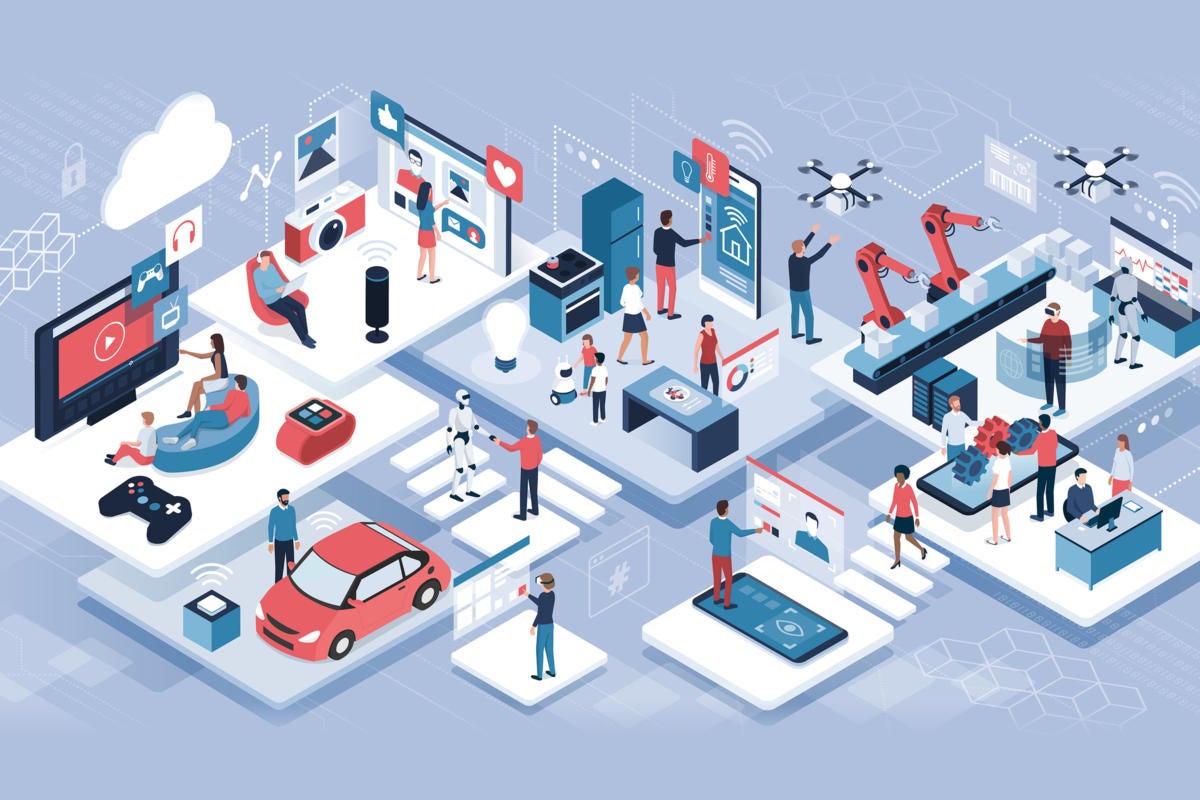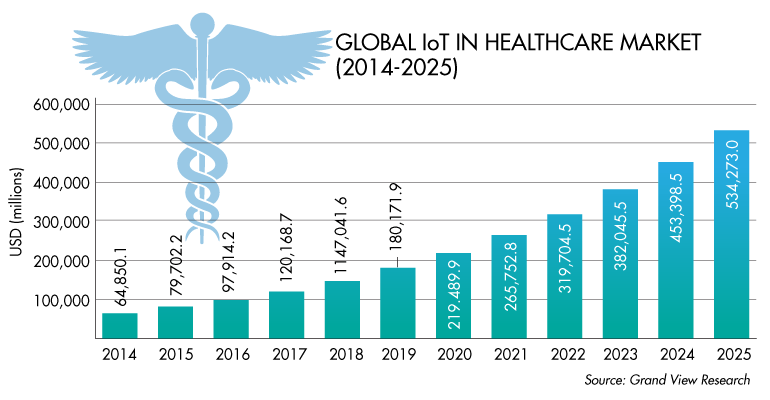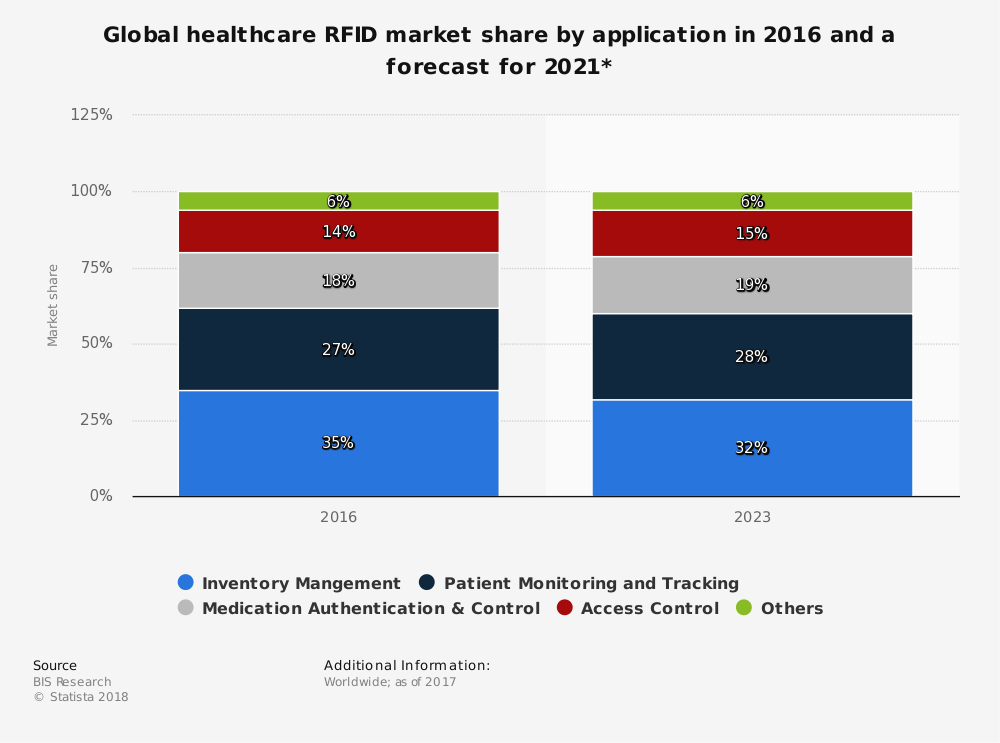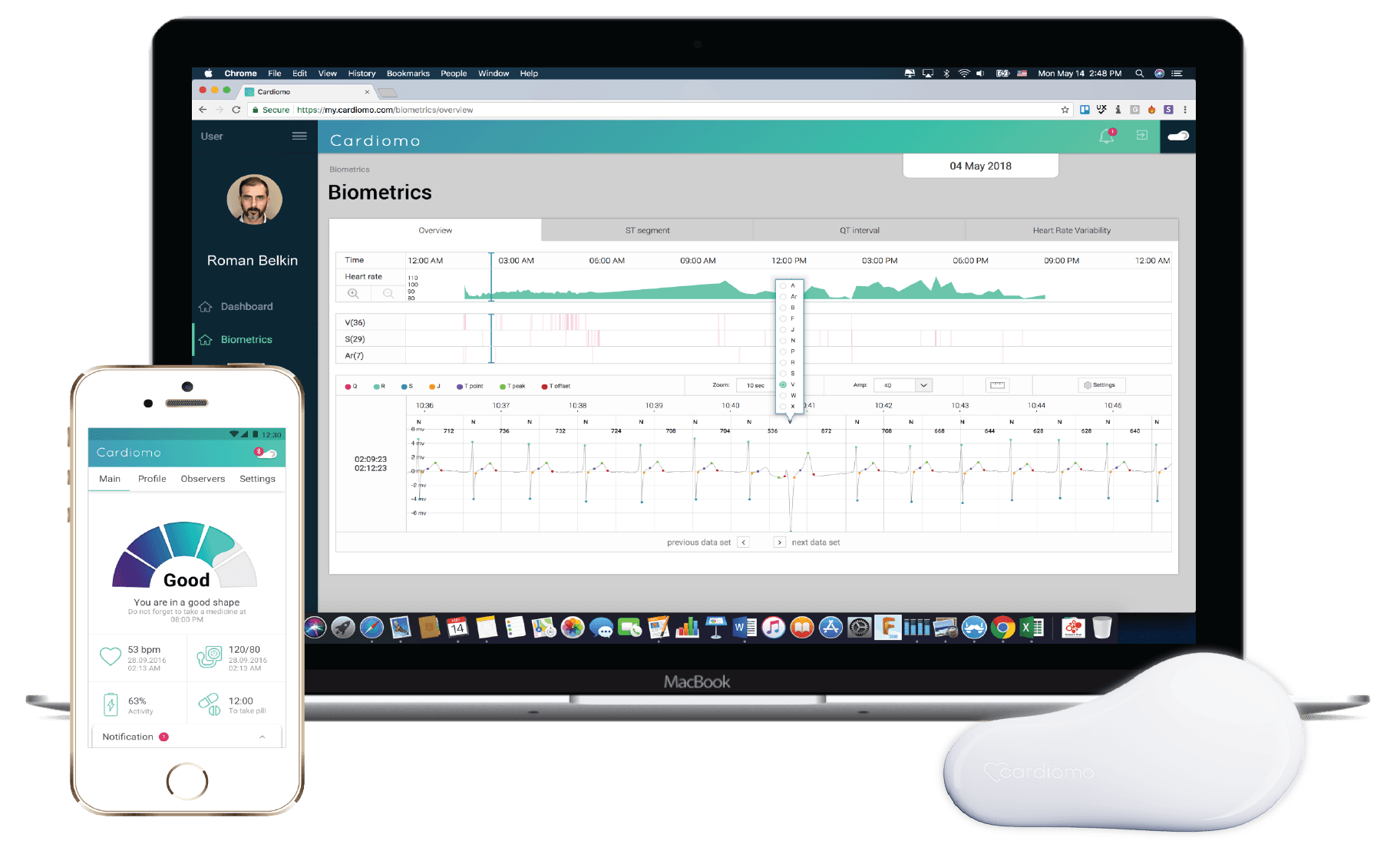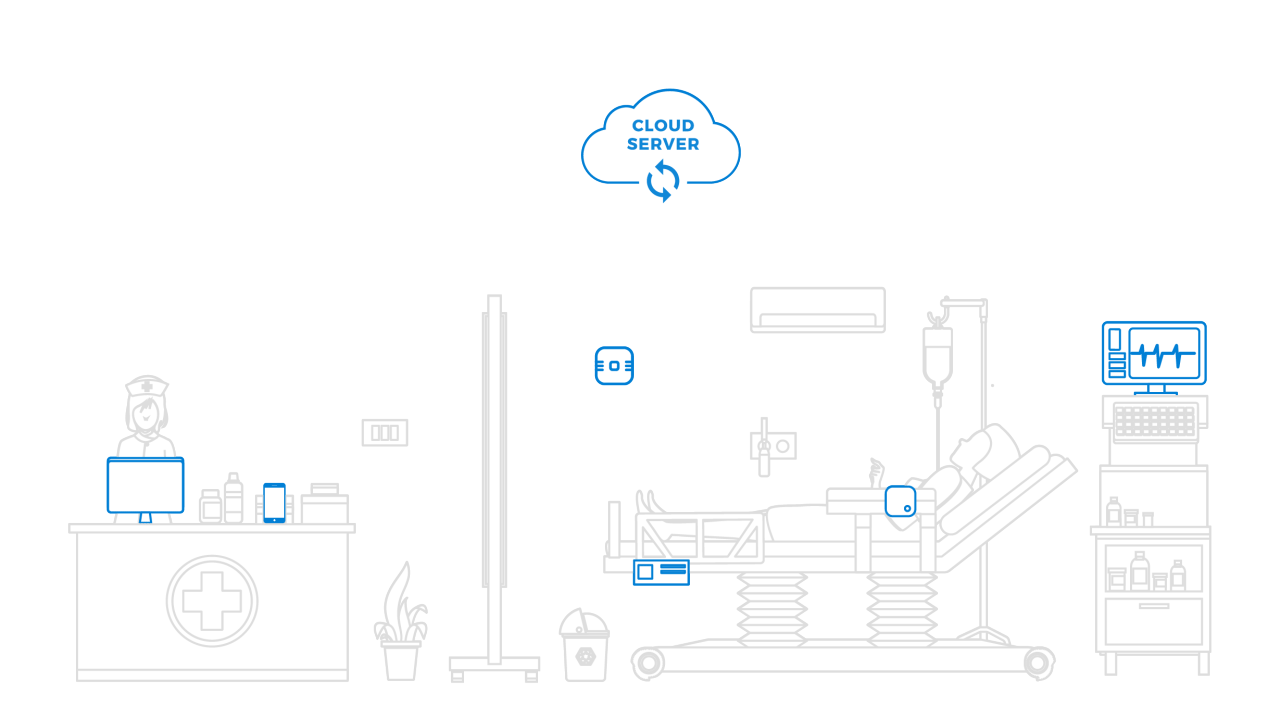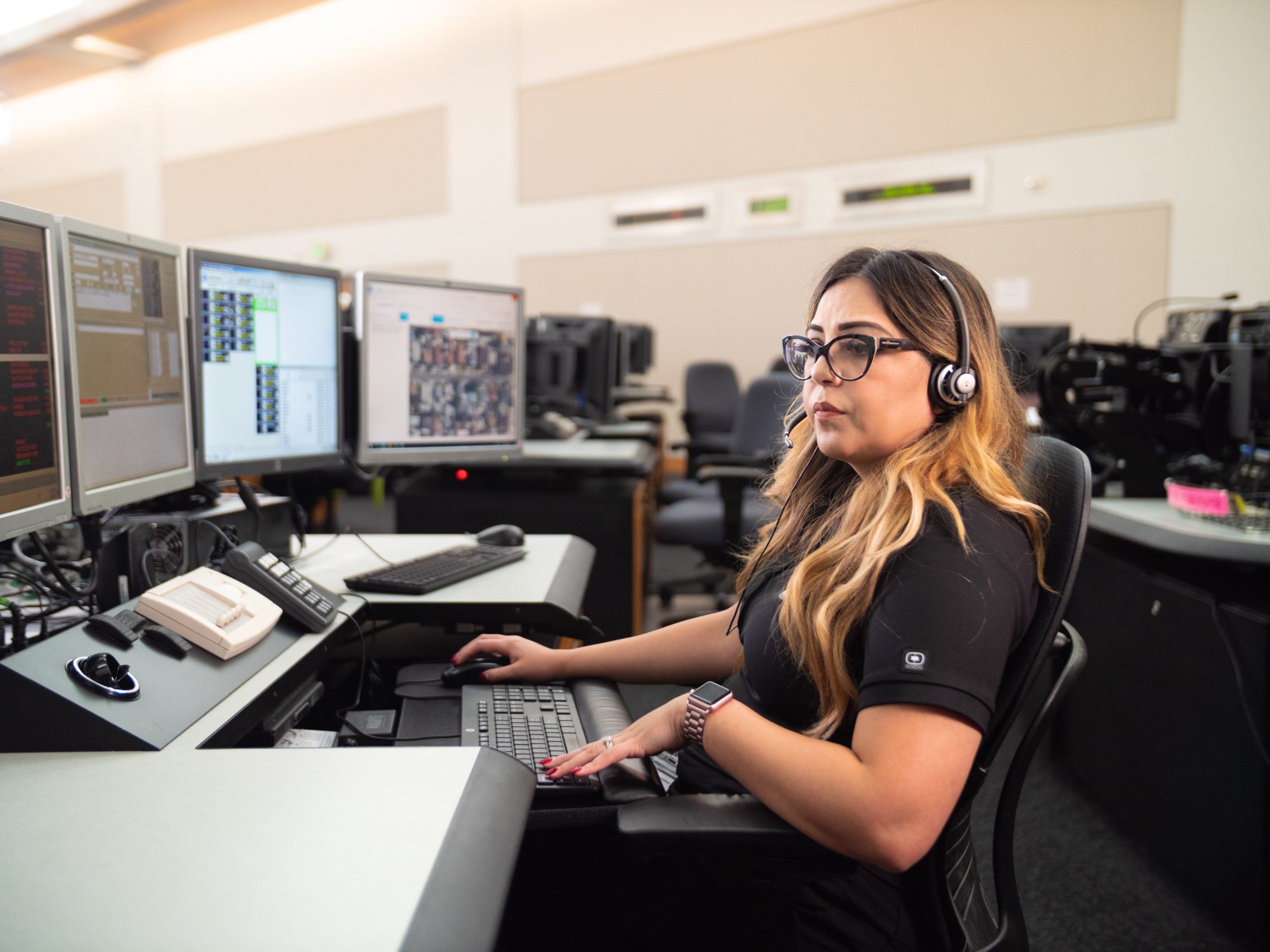Benefits of Using IoT in the Healthcare Industry

Healthcare is one of the most important industries, but due to the complexity, level of responsibility and strict regulations, innovations have to come a long way before they get fully adopted in this domain. However, things have changed since the pandemic has shown the vulnerabilities and inefficiencies in this sector. Internet of Things could be the technology that will help us solve these and other problems in healthcare.
The use of Internet of Things (IoT) in healthcare has vast opportunities, but its implementation is moving slowly. With the development of medical IoT, there will be great opportunities for telemedicine, remote monitoring over the patient’s condition, and much more.
According to recent research, by 2020, 40% of IoT devices will be used in the healthcare industry, while today, the medical IoT has a 22% share of the whole IoT market.
Globally, more than 60% of medical organizations worldwide are already implementing IoT solutions. In the upcoming years, the number of patients and professionals in healthcare using IoT-connected devices for health monitoring will grow by 44.4% every year.
The Internet of Things in healthcare can be a solution to a number of problems that have accompanied medicine throughout history. The Internet of Things and healthcare can mutually give great results.
The Future of Healthcare with IoT Technology
One of the factors in the development of the medical services market in the times of quarantine and beyond is the growing application of UAVs (unmanned aerial vehicles), mobile tools for telemedicine, remote patient tracking technologies via wearables, etc. For example, the testing of UAV technologies in the medical supply chain is already underway. In particular, in Rwanda, drones are used to transport donor blood. In the future, drones will be used to deliver medicines to patients for home treatment.
There are many proven benefits of RFID in healthcare and this is why the development of IoT healthcare solutions will lead to the increasing integration of RFID technologies. By 2021, this technology will be used in a number of areas, including inventory management in medical institutions (32%) as well as patient monitoring systems (28%).
Indeed, with the help of IoT, the industry receives a lot of cutting-edge opportunities:
- Telemedicine. With the help of medical Internet of Things, a person can get advice remotely. Thus, it is possible to save a patient’s time and reduce the doctor’s workload.
- RFID for patient monitoring. Labels allow tracking the current location of the patient. In practice, RFID is used in maternity hospitals to avoid confusing children from different mothers. The technology is also used for people suffering from memory problems like Alzheimer’s disease, and other disorders.
- Wearable devices that transmit data directly to doctors. These are most often implemented in the form of watches, bands, bracelets and other trackers that collect all the necessary information (heart rate, blood pressure, pulse, blood sugar, etc.) and send it to the doctor. There are already dozens of such IoT in healthcare examples already working as parts of healthcare services.
- Diagnosis, preventive medicine. Devices for collecting medical information transmit it to the doctor, who can determine any deviation from the norm, and recommend appropriate treatment in advance.
The changes can be so radical that the industry in the old format will almost completely go into the past, and thus will become much more comfortable and effective for both the patient and the doctor.
Why Using IoT in Healthcare Industry
Since day one, the healthcare industry had experienced a number of problems that are still far from being solved. For example:
- Low patient engagement and medication adherence. Often, patients simply ignore the requirements of a specialist, using folk remedies or “a drug that is advised by friends.” Using IoT healthcare solutions that allow remote tracking of medication adherence and patient engagement, the treatment process will always be under the control of a doctor.
- Slow treatment process and delays in hospital discharges. Even on normal days, hospitals often do not have sufficient staff power to service all the patients that are coming in. Pandemic only escalated this problem in times and showed the weaknesses in existing healthcare processes. Add to that a lack of qualified specialists, low number of well-equipped rooms, etc. Integrating Internet of Things to healthcare industry, we can significantly speed up and simplify the process of providing assistance. Connected technology can help monitor patient admission, optimize workflows, predict the influx of patients during an epidemic period, etc.
- Underfunding and misplacement of resources. Modern medicine is very resource-intensive, and it is not always possible to meet all the requirements. This is especially true for Asian, African, and Latin American countries. IoT will significantly reduce the cost of maintenance of premises, personnel, transport, and more.
The sooner medical facilities start integrating IoT, the more opportunities there will be for business development in the long term.
However, bringing IoT in healthcare market is not that easy. The main difficulties are related to the insufficient development of privacy technologies, as well as the use of outdated infrastructure. It is also worth noting that the cost of implementing IoT is still quite high, and the technology is not fully ripe. At the same time, investments in the Internet of Things in healthcare can start giving returns quickly if well-calculated.
Uses of IoT in Healthcare
The variety of uses of IoT in healthcare doesn’t limit with smartwatches or bracelets that monitor our heart rate. There are plenty of hardware and software startups that do their best to provide high-end solutions for current healthcare problems and leverage the benefits of Internet of Things in healthcare applications.
Cardiomo
Cardiomo is a product designed to monitor the state of a body. It is a special sticker with sensors that track basic biometric parameters such as body temperature, pulse, pressure, etc. All this information is then transmitted to a dedicated mobile application.
The developers position Cardiomo as a product that allows monitoring of the status of elderly patients. However, this device can be used at any age. Cardiomo may soon be introduced into professional medicine.
Elvie Pump
Elvie Pump is a device that will be useful for new mothers. It is an innovative breast pump that works absolutely silently. The idea was to develop a device that doesn’t require any physical effort. Elvie Pump has become just that.
The breast pump is portable and very compact. Just place it on your chest and press the power button. No more effort is needed. You can connect the device to the free Elvie Pump app to monitor milk volume, browse pumping history for each breast, and turn on/off the pump remotely. The device is completely invisible and has a minimum weight, so it can be installed, for example, before a walk.
Smart Hospital
Smart Hospital by Z-works is a full-fledged virtual hospital. Its creators provided the ability to read a huge amount of data, from body temperature to motion features. In total, Smart Hospital is able to obtain and analyze more than 20 types of data.
In addition, Smart Hospital allows choosing the appropriate treatment method, depending on the information obtained from the analysis of biometric parameters: heart rate, breathing rate, body temperature, etc. The developers believe that Smart Hospital is able to save people from a long wait for medical care in the future.
Aira
The problems that blind and visually impaired people commonly face have always been very acute. The startup Aira offers a solution. The company collaborates with Google Glass and is developing an add-on that will offer audio tips. Thus, it will be much easier for a blind person to move around the city.
To run Aira, you need to touch the glasses sensor three times, which in turn will call an assistant – a member of Aira support team.
After touching it three times, this assistant receives the picture and all the information about the wearer: the history of their illness, their current location, contacts of people who need to be contacted immediately in case of an emergency, etc.
Amiko
Amiko wants to help all people who suffer from lung disease. To do this, the company has developed a smart respirator. Its main feature is that it is able to collect information about a person’s breathing, analyze it, and send it to the doctor.
The information obtained via the Amiko device will allow them to monitor the current state of the patient and choose a new treatment strategy, depending on the results of therapy. A wide range of settings allows customizing the device for each patient. The attending physician can monitor the patient’s condition daily and the patient doesn’t even need to visit the medical institution.
RapidSOS
Normally, when you call 911, you need to spend time explaining your location, name, etc. Often there is simply no time for that. RapidSOS can help. It is a mobile application that contains all the necessary information – health-profile, live incident data, etc. Emergency API Suite from RapidSOS can turn a device or an app into a lifesaver. It can be connected to wearables, home security systems, and even cars.
Thanks to this app, when an emergency service receives your call, the operator immediately sees all the key data: the name of the patient or the victim, their location, blood group, etc. Thus, the ambulance team will be prepared with everything you need when they arrive.
Thync
Psychiatry is one of the most difficult areas of medicine, and it is still developing. Therefore, the treatment of a number of diseases in which the nervous system is excessively excited or conversely, depressed, remains extremely difficult. The way out of the situation could come from Thync – a hardware startup that offers to manage and improve the mood.
Thync consists of two wireless devices. The first one is Calm, which helps to relieve stress. The second one is Energy, with which a person can “recharge.” The principle is based on sending weak impulses to the brain that affect mood. According to the developers, it takes only 5 minutes to change your mood.
Benefits of IoT in Healthcare
There are many advantages of IoT in healthcare as in many other industries. However, some benefits of IoT in healthcare outrun the application of connected technology in other domains because of their value. For example:
- IoT enhances the capabilities of preventive medicine. Using IoT data, we can better understand what condition the patient is in and respond accordingly. The collected information allows doctors to notice the changes and directly address any issues without waiting for symptoms to become obvious. For these purposes, application of neural networks for data analytics together with vast IoT data work great.
- Increased mobility and alert of hospital staff. This is one of the biggest IoT benefits in healthcare that can make a difference for the staff on the frontline. In the times of pandemic, more and more patients need urgent help. Today, nurses or doctors work beyond their capabilities. They need tools to help them keep track of dozens and even hundreds of patients in real-time. With IoT tracking systems, they can get alerted immediately when critical changes in patients’ parameters occur, quickly locate patients who need help and direct assistance asap.
- Accelerated processing of patient data. Normally doctors spend hours processing different kinds of information. With IoT, it will take a few minutes. In addition, the Internet of Things, combined with AI and ML, can offer possible treatment options.
Better management of drugs and medicine adherence. Using medical apps for doctors, healthcare professionals can remotely find out whether the patient has taken drugs, and if not, the therapist can call and remind a patient about that or, even further – this whole process can be automated. - Reduced risk of error and miscalculation due to the human factor. Sometimes tests mix up, or the doctor may make a wrong measurement or incorrect conclusion. The human factor in medicine can lead to serious consequences. With IoT, this is largely avoided with checks and balances. The machine will provide maximum diagnostic accuracy.
- Personal data is securely transferred directly to the doctor. All information is strictly confidential and nobody will be able to see it except the attending physician. Information is transferred directly from one device to another.
Conclusion
The future of IoT in healthcare is promising in the view of the recent events. The unfolding crisis in the industry caused by the pandemic once again proved the importance of implementing technologies like IoT, big data and AI to enhance efficiency and improve safety in healthcare. Implementing IoT solutions right now is no longer about staying ahead of the competition, it’s about making sure we can handle the crisis.
We at Bestarion help companies leverage IoT in healthcare industry. Our professionals develop IoT software in healthcare that bring real value. Innovative applications created by Bestarion help increase the trust in healthcare practices, improve communication between healthcare professionals and patients and make processes more efficient and safe. Contact us now and we will help you bring your ideas to life!

